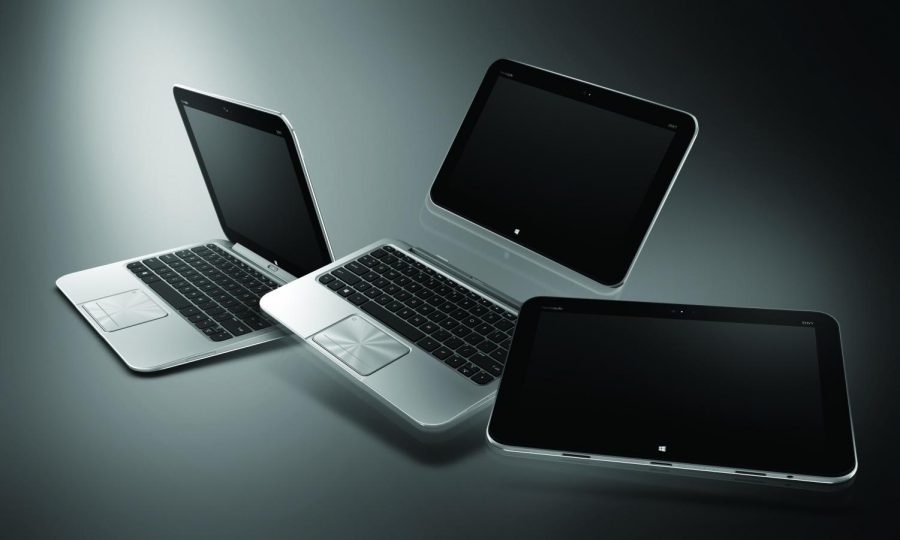The Helpful Guide for the Perfect Laptop
The steps to take to find the ideal device for you.
As another school year begins, many of us are faced with the issue of a slow, or outdated laptop. The main reason why this is a hassle to many is because of the tech jargon, which comes along with buying a laptop. Following this list will not only wash away the frustrations off the odd tech language but also act as a guide to help you make the right decision based on your needs.
Step 1: Understand your budget
Before looking at anything, always think within the lines of your budget. Always ask yourself, “How much money do I have and what can I get with that?” If the budget does not have any options fitting your needs, then ask yourself, “How much do I have to save in order to get exactly what I need? Is it worth the wait?” A realistic decision is just as good as an informed one. These devices range from $150 to $2,500, so there will always be something within every budget.
Step 2: Decide what you want
After recognizing what you can buy, see what attracts you the most: a laptop, tablet, or a 2-in-1? A laptop being the portable computer, a tablet, the touch screen sibling of a laptop which can run apps that some, if not most, laptops are unable to run, and a 2-in-1 which is ultimately, the best of both worlds. Always try to opt for a 2-in-1 if your budget allows, because whether or not you want a touch screen, the comfort of having it there is much better than not having it at all. These devices are more enhanced and innovative, as it takes a lot of effort and creativity in order to come up with a product which works so smoothly as both, a tablet and a laptop.
Step 3: Brand Loyalty
Some swear by the modern, sleek look of an Apple device, both from their physical appearance, and interface. Others, will look at Apple as the outdated device with an interface that dinosaurs would laugh at. Though some jokes are the bitter truth, the brand of the laptop you get is based off of what you’re used to, as well as the thought you put into the build of your laptop. The main concern of the users should be the platform in which the laptops run on. OS X belongs to Apple. Windows 10 (most recent) is the more common platform, which can be found in brands such as HP, Acer, Dell, and pretty much any brand besides Apple, making it a more flexible choice. Chromebooks from many brands also exist, which run on Chrome OS, a simplified, user-friendly interface meant for students and business.
Step 4: Know your specs
This is where the tech jargon scares most people away, and where many salesmen can hook people into an unnecessarily large purchase just by throwing out big numbers. “8th Gen. i7 processor…16GB memory, 1TB storage.” ‘Computer specifications’ is just a way of describing the capabilities of how much and how fast a computer can run different programs. The easiest way to understand your computer is to adopt Spike Jonze’s mindset and think of your device as a human. When you see the letters CPU, this refers to the laptop’s “Central Processing Unit,” which is basically your computer’s brain. This determines how fast your laptop thinks, processes information, and delivers data. If your computer has a newer and “bigger” CPU it can process information faster than one with an older generation core and smaller processor. Depending on what you do, the most basic processor (Intel Core i3) would be your best bet. A very important component after the CPU is the Random Access Memory (RAM) which can count as your computer’s arms. RAM can be seen as your instantaneous memory, which can be reached every time you open a program and use it. The more RAM your computer has, the more you can multitask while using your computer. After your instantaneous memory comes your actual memory, in the form of storage. Nowadays, laptops come with the option of a hard drive, which is a more mechanical piece in the computer. It contains moving parts and a Solid State Drive (SSD), which is more compact and does not require any moving parts. It also gives lightning fast speed. An SSD is also a safer option to go with for a laptop because as time goes on, an SSD will not “wear out” like the moving parts of a Hard Drive. For students more involved with subjects that deal with intensive graphic work, the need for a more “dedicated” graphics card becomes more crucial. This allows for faster rendering, editing, and design.
Once you’ve gone through these steps, more personal preferences should be taken into consideration. Things such as the screen, keyboard, speaker and other features play a big role in having a computer more suitable to one’s taste. Of course, all of this is to top off the more important aspects, such as the specs you have chosen, and the budget you have put aside for a laptop. And always remember, during this time of year, student discounts await you at every store, so do not hesitate to get a great deal on your future laptop. Happy hunting!

